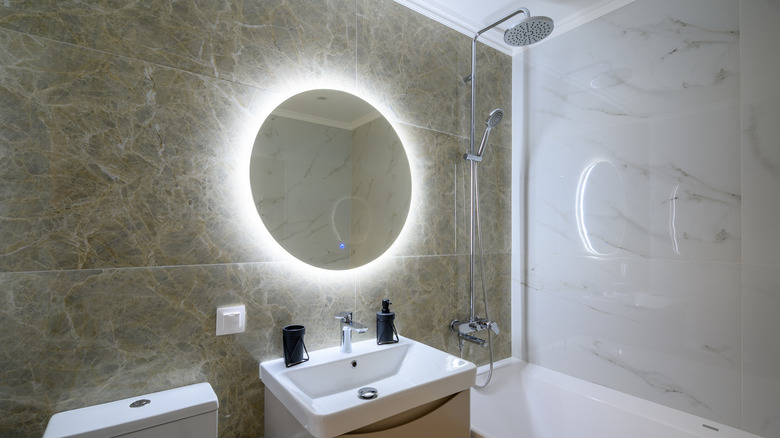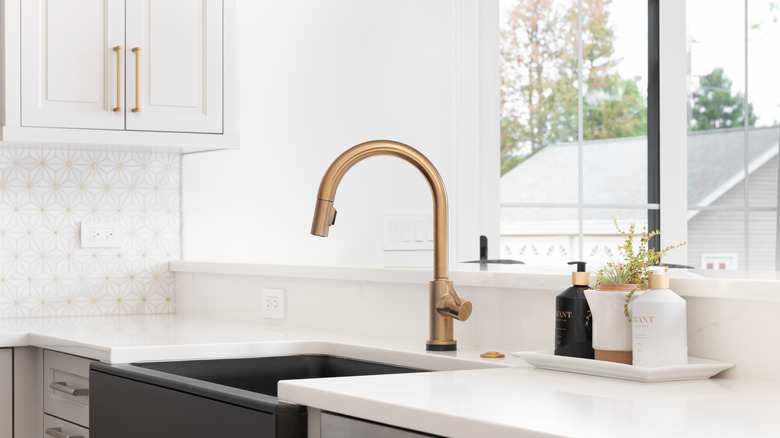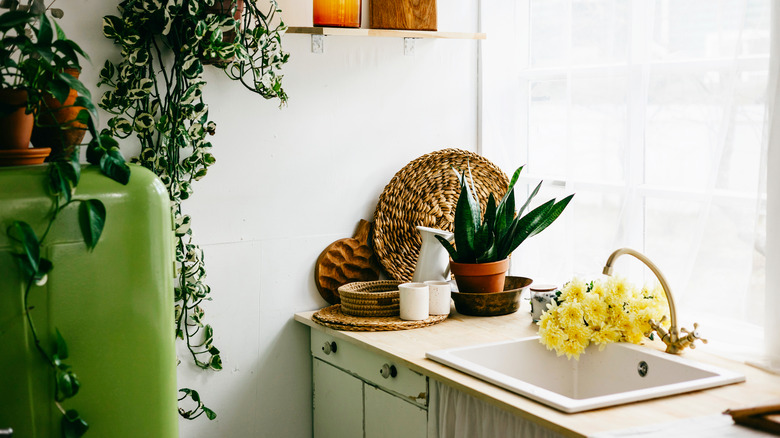How To Pick The Perfect Plumbing Fixtures, According To Designer Nate Berkus
Kitchens and bathrooms are the most commonly remodeled rooms in a home, according to Remodel or Move, and they can be a major undertaking with everything from countertops to flooring, cabinetry, and beyond. Whether you're building a home or renovating your space, choosing new plumbing fixtures may seem like the easiest part of the design process. However, your faucets and fixtures are still an important decision, and it's worth considering all your options.
Firstly, you'll want to choose fixtures that complement your home without drawing too much attention. They should be stylish but timeless, a difficult balance to achieve in a world of ever-changing design trends. Most importantly, your fixtures need to work. All in all, the right fixture has to be a functional, beautiful, and era-appropriate option. Luckily, interior designer and famed television star Nate Berkus is here to alleviate some of your plumbing design woes and help you avoid any faucet fumbles. In a brief video released on his Instagram, Berkus explains his tips for choosing the right plumbing fixtures for your home.
Consider the shape of the faucet and fixtures
In his Instagram video, Nate Berkus says that his first tip is to "consider the shape of the actual faucets and all of the plumbing fixtures." Even though fixtures all serve the same basic purpose — allowing water to flow into your home — they come in many shapes and sizes, and not every fixture will be ideal for every space. There's nothing worse than trying to wash your hands in a poorly-planned sink or crouching to fit under a showerhead that's too short.
Obviously, you want to choose fixtures that make sense for the location — not just in the room but in your home as a whole. A large sink could look silly with a small faucet, so you'll need to look for fixtures that suit the level of drama in the space. According to the research and review site Mr. Kitchen Faucets, an ideal faucet should extend about 5.5 to 8 inches over the sink, depending on the depth of the sink. Berkus also recommends choosing a faucet and fixtures that make "some reference back to the architecture of your space." For example, polished chrome fixtures look sleek in a modern, minimalist bathroom, or if you're renovating an older home, consider a faucet that will complement the historic kitchen.
Choose the most effective option
With so many interesting and elaborate faucet designs out there, it can be tempting to choose style over functionality. However, it's best to stick to fixtures that actually work for you and make sense in your space. The average cost to replace a kitchen or bathroom faucet is between $150 and $400, so you'll want to get it right the first time (via Forbes). In the kitchen, for example, it's best to have a faucet that allows for good water pressure and varying spray angles. You don't want to end up regretting your purchase because the glamorous design is horrible for washing dishes.
Still, you don't always have to sacrifice looks for practicality. Nate Berkus recommends a gooseneck faucet with a pull-down nozzle for the kitchen because they are easy to use, easy to clean, and they elevate the space. These faucet types are ideal for filling pots and washing dishes because their height leaves plenty of room to maneuver your hands below them. Plus, gooseneck faucets complement other features by making the whole kitchen look a little more expensive and luxurious.
Feel free to mix finishes
One of the things people fret over the most about new fixtures is their metal finishes. Is it ever okay to mix oiled bronze and nickel or black and rose gold? If you want to create a cohesive look, it's true that your faucets should generally match your other hardware, like drawer pulls and cabinet knobs. However, this doesn't have to be a perfect match. For example, you could have a polished chrome faucet with brushed nickel cabinet hardware. Although they are slightly different, the color palette will still look cohesive.
"Even if you have chrome or nickel in your kitchen, you can still change to brass or bronze or black in your bathroom," Nate Berkus says, "but make sure it's consistent." As long as the finishes are consistent within the same room, it's not likely that anyone will notice or care. In fact, changing the finishes can be a fun way to diversify your space and create a more distinct vibe for each room. Not everyone loves the idea of monotone metals or can afford to transition their whole room at once, and that's okay. Lily Ann Cabinets explains that even a mismatched room can still look intentional, especially if your home design has a more rustic, vintage, or farmhouse theme.



